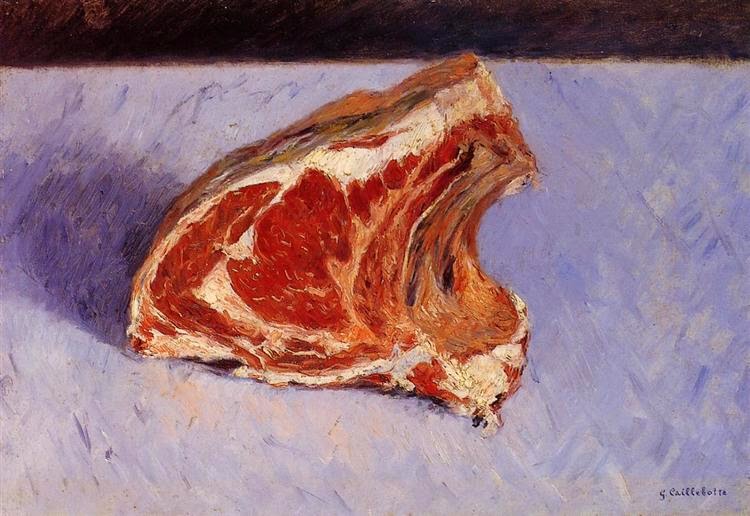 |
|
Paris Street; Rainy Day, 1877, Gustave Caillebotte (courtesy Art Institute of Chicago).
|
Repoussoir is a compositional technique where an object along the left or right foreground directs the viewer’s eye into the composition. The bracket is often done with a tree, but sometimes it’s a person. In Paris Street; Rainy Day(above) the man with the umbrella on the far right of the canvas drives your eye up. Note that he’s a simplified and non-distracting figure compared to the complexity and detail of the rest of the canvas.
 |
|
The Art of Painting, 1665-68, Johannes Vermeer (courtesy Kunsthistorisches Museum)
|
Repoussoir was an important special effect of the 17th century. Vermeer used it in The Art of Painting, above. The great dark shape of the drapery drives our eye to the traceries of the map on the far wall.
|
El Río de Luz (The River of Light), 1877, Frederic Edwin Church (Courtesy National Gallery of Art)
|
The Dutch Golden Age painters particularly loved repoussioras a way to pop drama into the flat, Dutch landscape. So did the Hudson River School painters. The example above, is by Frederick Edwin Church. Church was keenly interested in the flora and fauna of the tropics. There’s a canoe in the distance and waterfowl in the middle-foreground, but the tree on the left conveys most of our factual information about the scene. But it’s still a framing device, and what lies beyond is even more important. That’s our impression of the terrifying sublimity of the steaming riverbed beyond. (You can look at the painting in detail here.)
| Nunda Farm, by Carol L. Douglas. This is not repoussoir, but rather a path drawing you into the composition. |
Repoussoir is still extensively used in modern photography and landscape painting. It is a different effect from creating a path into the composition. I’ve given you an example of that in Nunda Farm, above, where the corn stalks draw your eye through the composition.
| Repoussoir gone bad, by Carol L. Douglas. Why do you think the evergreen on the right fails to draw you into the composition? |
I’ve also given you a failed sketch by me as an example of how repoussoir can go wrong. I was searching for a way to give perspective to a scene of unbroken snow and darkness. The small pine at the right doesn’t exist in the real scene. I abandoned this composition because the tree conflicted with, rather than enhanced, the main subject. Why do you think it didn’t work?
 |
| Hedgerow in Paradise, by Carol L. Douglas. I’m deliberately blocking the viewer out here. Why do you think that is? |
Hedgerow in Paradise is a painting of a farm in Bloomfield, New York. This is an area of delicate beauty, where the flat lake plains are tentatively breaking out into gentle rolling hills. I intentionally chose to let the long view sit alone, giving the viewer no framing and no path into the subject. In other words, there’s no real foreground, just a scene set in the middle distance.
 |
| Hedgerow in Paradise, reimagined with repoussoir. How does it change the composition? |
Above, I’ve imposed a tree in the foreground. Does it add to or distract from the subject? How does it change the meaning of the composition?







